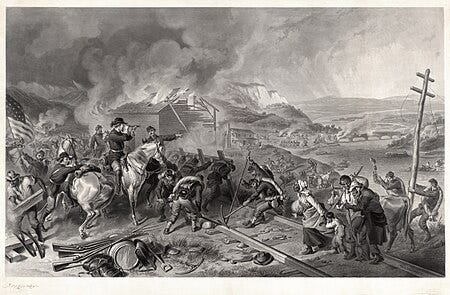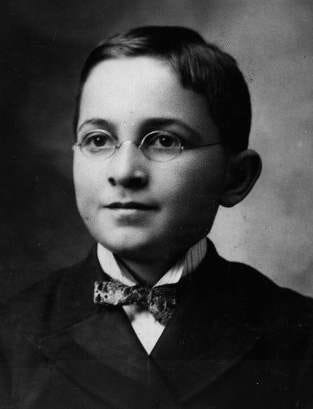Before Lawrence: The Concept of Total War: Lane, Sherman and Truman
Final Chapter of Before Lawrence, a look a the concept of "total war".
This is the final chapter of Before Lawrence. To learn more about the purpose of writing this story, check out the “Forward.” Before Lawrence is part of The Missouri Chronicles. Follow the story by subscribing on Substack, contribute your thoughts, and check out the added resources.
A lot can be placed at the feet of James Lane. In 1861, when he destroyed Osceola, he was perceived to be a nut case. The professional military considered it unacceptable to attack the civilian population. Lane could have achieved a military objective by destroying infrastructure that served the Missouri State Guard. That would have meant destroying the port and seizing all ammunition. It did not justify the destruction of the entire town and the sudden homelessness of 3000 civilians.
Yet three years later the concept of “total war” had been entrenched in the military strategy of the Union army. General Phil Sheridan would totally disrupt the economy of the Shenandoah Valley by destroying anything that could lend support to the rebel cause, particularly farm produce and livestock. Yet even then, there are not many reports where an entire town was destroyed, nor of an officer deflecting from a military mission for personal gain. Sherman’s famous march through Georgia was considered the classic example of “total war”. Yet even so, it could be argued he faced a unique challenge. He was taking an army of roughly 85,000 men through hostile country without any guarantee of supplies to feed them. So he took what was needed. In the process, soldiers violated orders and burned and looted. Yet Sherman is considered to this day a military genius.
It can be argued that Lane was equally effective. While it is true he violated orders, neglecting his mission in order to carry off loot, the effect militarily was quite positive for the Union cause. General Sterling Price was left between a rock and a hard place. Despite having won the battle of Lexington 100 miles north of Osceola along the Missouri River , he was outnumbered by federal troops stationed in Jefferson City under the command of Colonel Ulysses S. Grant. And to his rear he was seeing vital supply sources being decimated. It could be argued that the burning of Osceola forced him to retreat back to Springfield.
It is ironic that twenty-three years after the sacking of Osceola a man would be born in Lamar, Missouri, only 65 miles from Osceola. He would take the idea of “total war” to a much higher level. It would be Harry S. Truman who would make the decision to drop two atomic bombs on Japan, killing over 100,000 people and wiping off the map two cities.
© Copyright 2024 to Eric Niewoehner
Previous Chapter: Aftermath
Your comments are welcome. Feel free to send a message.




